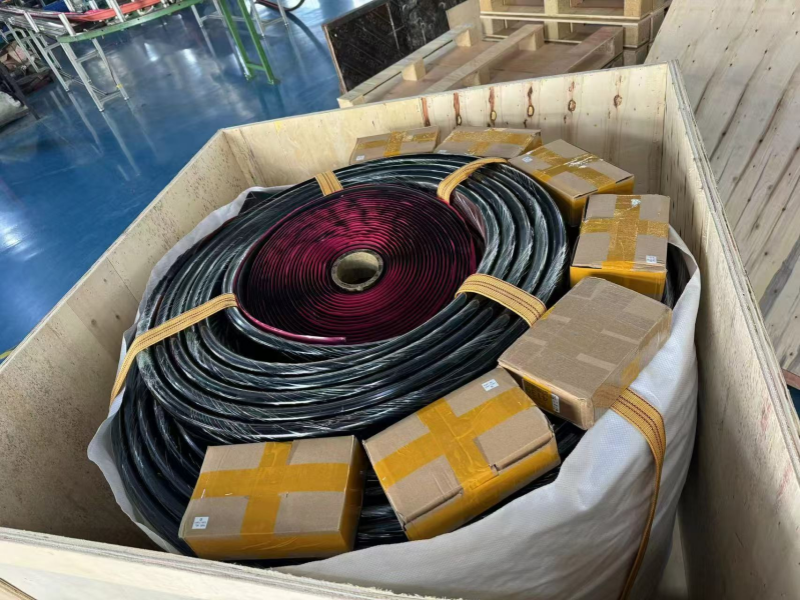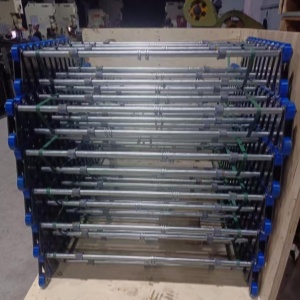How to Select Escalator Handrail Materials for Specific Operating Environments
Environmental Implications of Handrail Material Selection: A Stepwise Guide
Material selection for escalator handrails has an immediate and substantial effect on user experience, safety performance and maintenance costs. Each environment requires specific consideration when selecting handrail materials - this evaluation includes factors like friction coefficient, weather resistance and antibacterial properties - for proper selection. This article offers a scientific framework to select materials based on these considerations while taking into account environmental considerations and performance requirements.
Material Solutions for Extreme Climatic Conditions I.
1. High UV Radiation Zones (Outdoor Plazas/Tropical Regions).
Material Choices: polyurethane composite (PU) with UV stabilizers as the preferred material.
Technical Basis When used with Tinuvin stabilizers of 3-5%, polyurethane achieves a G7 UV resistance index (ISO 4892), increasing service life 5-8 times over conventional PVC.
Supportive design: In order to reduce photodegradation, dark-colored surfaces (black/deep grey) and monthly silicone maintenance treatments should be utilized.
2. Low-Temperature Freezing Rain Environments (Northern Winters/High-Altitude Regions)
Professional Solution: Nitrile rubber and thermoplastic elastomer blend.
Performance Data: Maintains Shore A Hardness of 75+-5 (EN ISO 7619-1), while offering 300% greater low temperature toughness than standard PVC.
Antifreeze Measures Utilizing microtextured surfaces with Ra 0.88-1mm to prevent adhering ice from adhering, it effectively thwarts their accumulation.
II. Solutions for Adopting to Specific Chemical Environments
1. Highly Corrosive Sites
Utilizing Fluorocarbon Rubber (FKM) Coated Composite Material as the Solution.
Corrosion Resistant Test: Does not crack under 3,000 hours of 5% NaCl Salt Spray Testing (ASTM B117), and achieves SK3 certification from DIN 53528, providing acid/alkali resistance.
Structural Innovation : Three-layer coextrusion process using corrosion-resistant fiber reinforcement with an Aramid content greater than 15% as its middle layer.
2. Food Processing/Kitchen Areas with Excess Grease.
Food Grade Solution: Silicone Rubber that conforms with FDA 21 CFR 172.600 is ideal.
Easy Clean Design: Surface Tension = 25mN/m. Meets Antibacterial Grade B of ISO 22196 for antimicrobial effectiveness and reduces microbial adhesion by 60%.
III. Select an optimal option for high traffic areas
1. Ultra High Frequency Scenarios (Subways/Airports)
Wear Resistant System: Polyamide matrix (PA6) embedded with 50-80mm Alumina particles provides the ultimate wear resistance.
Wear Resistant Data : Taber abrasion (CS-10 wheel) showed only 2-4 mg/1000 cycles with 10x longer lifespan compared to conventional materials.
Noise Reduction : Internal damping layers help keep rolling noise below 55dB(A). (ISO 3095).
2. Hygiene-Sensitive Areas (Hospitals/Labs)
Antibacterial Technology : Nano-silver composite TPU material
Antibacterial Performance: 99.999% Elimination Rate for MRSA and E. coli within 24 Hours (JIS Z2801) with effects that last 5 Years.
Laser welding technology ensures a seamless process by eliminating potential breeding grounds for bacteria.
IV. Solutions for Commercial Spaces
1. High-End Commercial Buildings (Luxury Stores/Star-Rated Hotels).
Customized Solutions
Surface Treatment: Genuine leather overlay 0.1mm thick (EN 15394 Fire-certified).
Surface temperature should remain between 25 and 28degC for optimal human comfort.
Pantone Color System Accuracy of 1.5 DE.
2. Light-Interactive Scenarios for Science Museums/Exhibition Centers)
Smart Material
Conductive polymer substrate with an O*cm resistivity range from 103-106O.
Pressure sensor array integrated (accuracy of 2%)
Dynamic Response LED System with Adjustable Brightness Control of 500-1500cd/m2.
V. Determine Total Ownership Cost Model
TCO formula WCO = M x P + C x f + L in this example, where M is Material Cost per linear Meter in USD per Meter and C stands for Construction Cost and Fee for Laying the Brickwork
P : Installability coefficient (1.2 to 1.8).
C : annual maintenance cost
Calculations suggests that high-performance composites offer a TCO savings of 10-15% when used in situations with daily foot traffic of >20,000 people.
Conclusion
Selecting scientific materials requires using an Environmental Stress Analysis-Material Performance Matrix-Lifecycle Assessment decision-making method. To select the optimal material solution, professional laboratories should conduct on-site environmental sampling (temperature-humidity profile, chemical pollution analysis and pedestrian dynamics) along with ASTM F1747 ageing tests to ascertain which one best matches up. Selecting suitable material selection can reduce handrail system failure rate by 40% while increasing maintenance intervals threefold.

